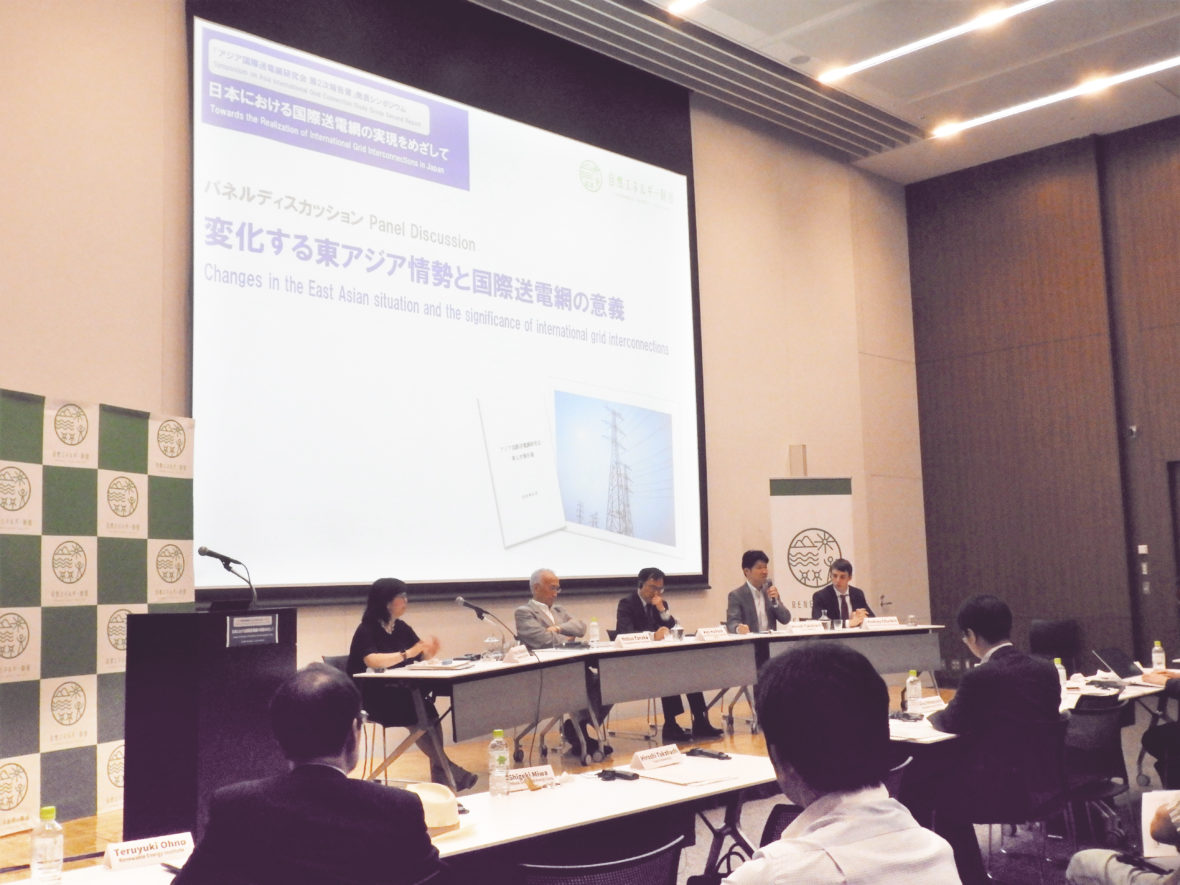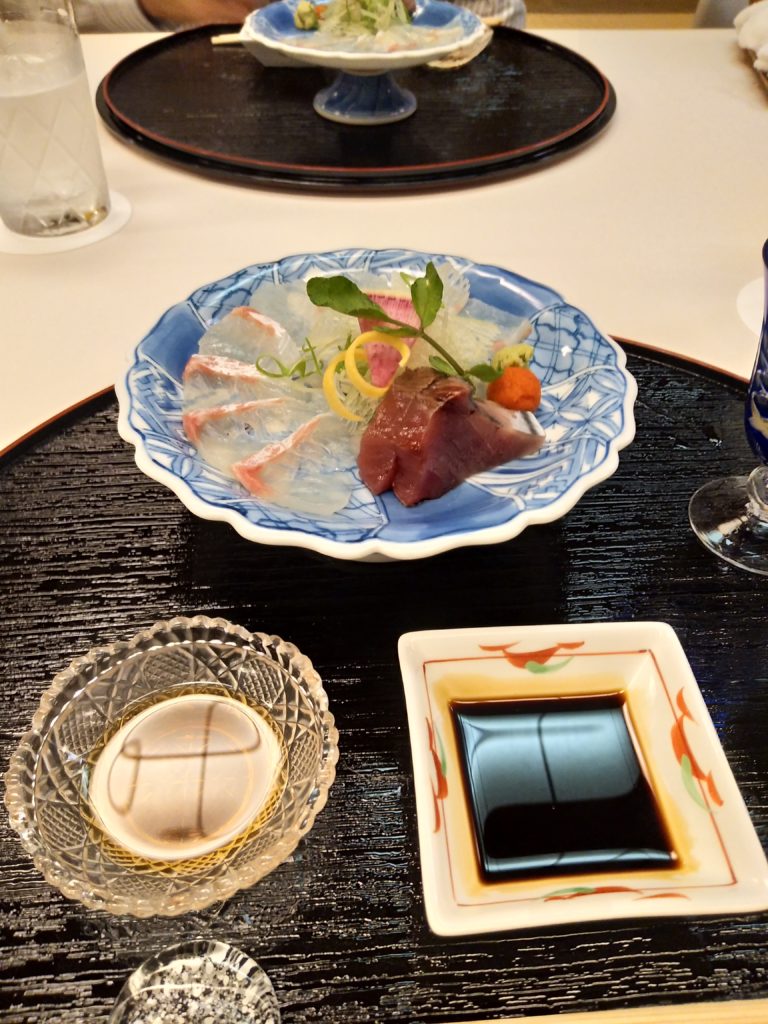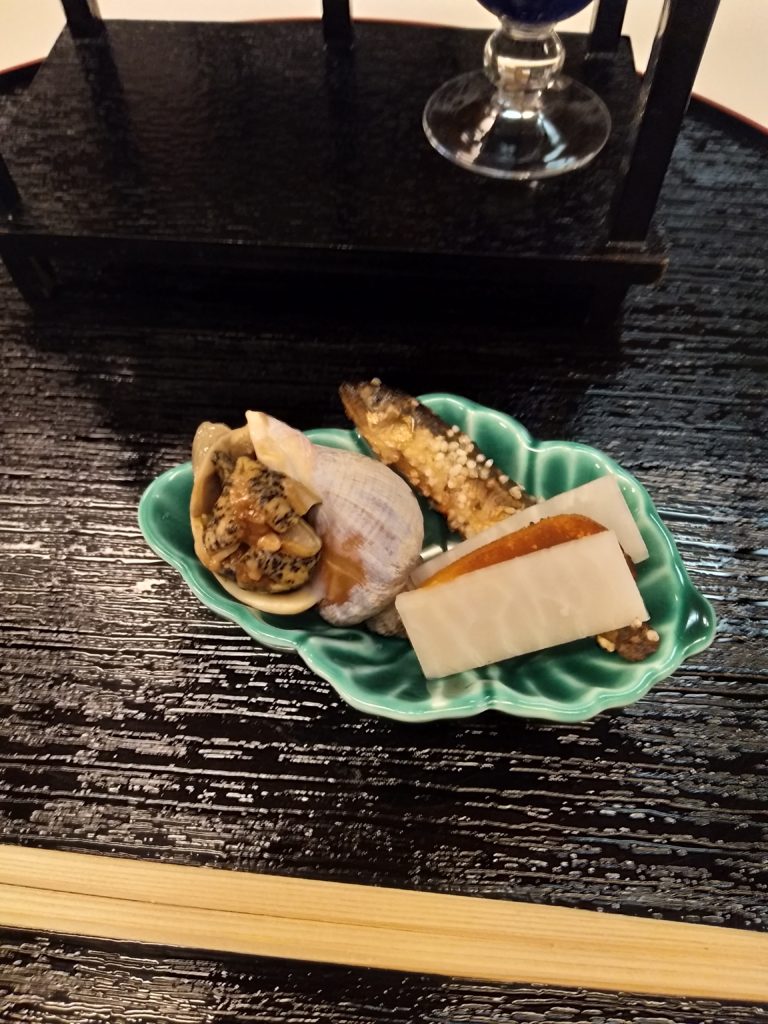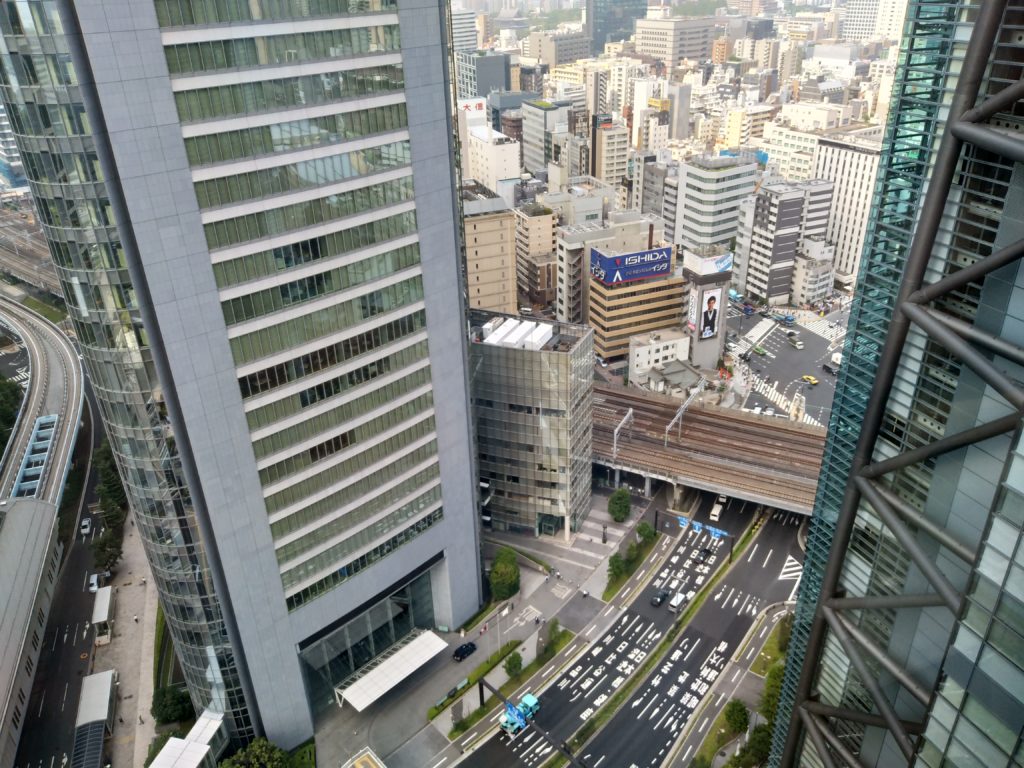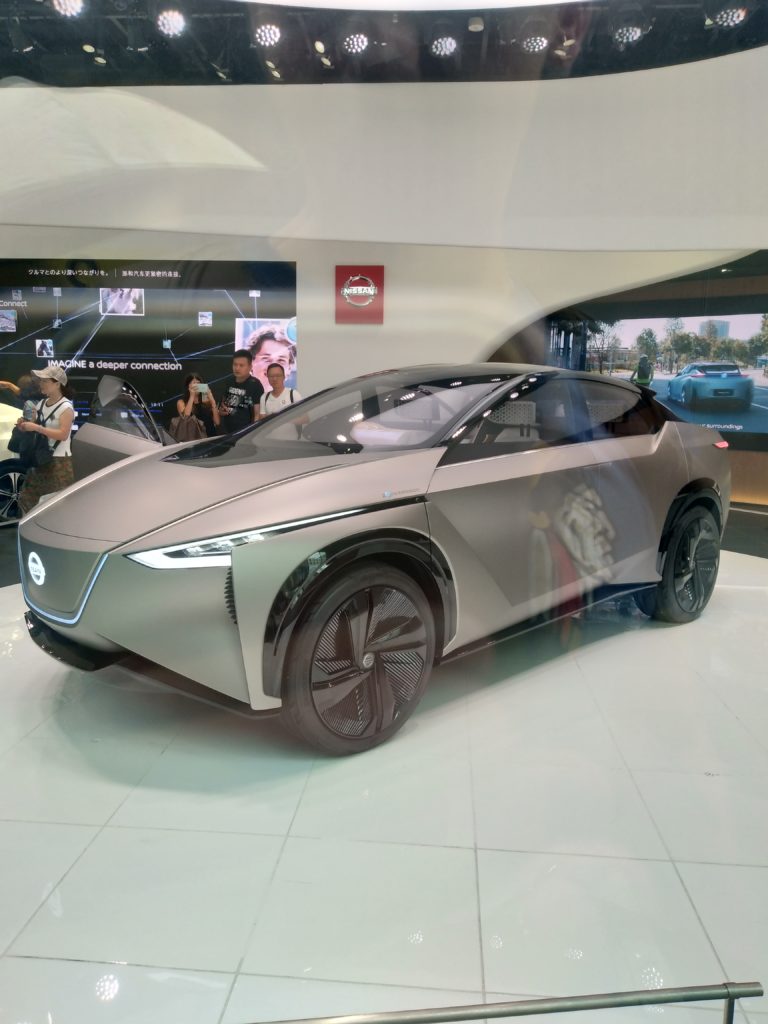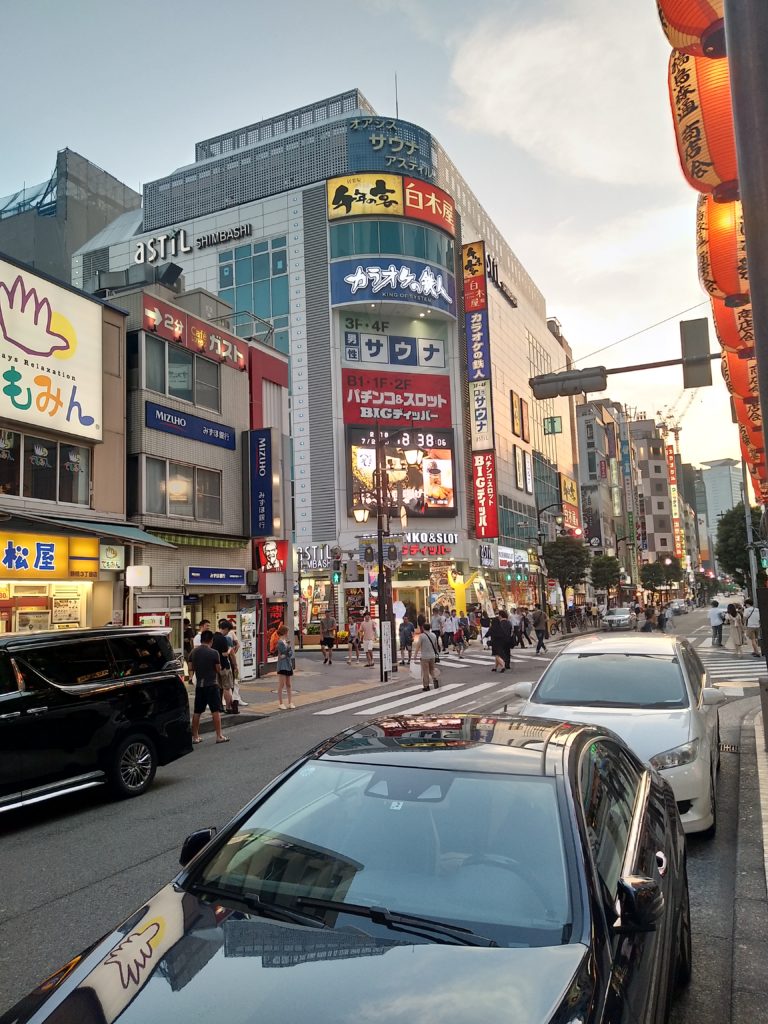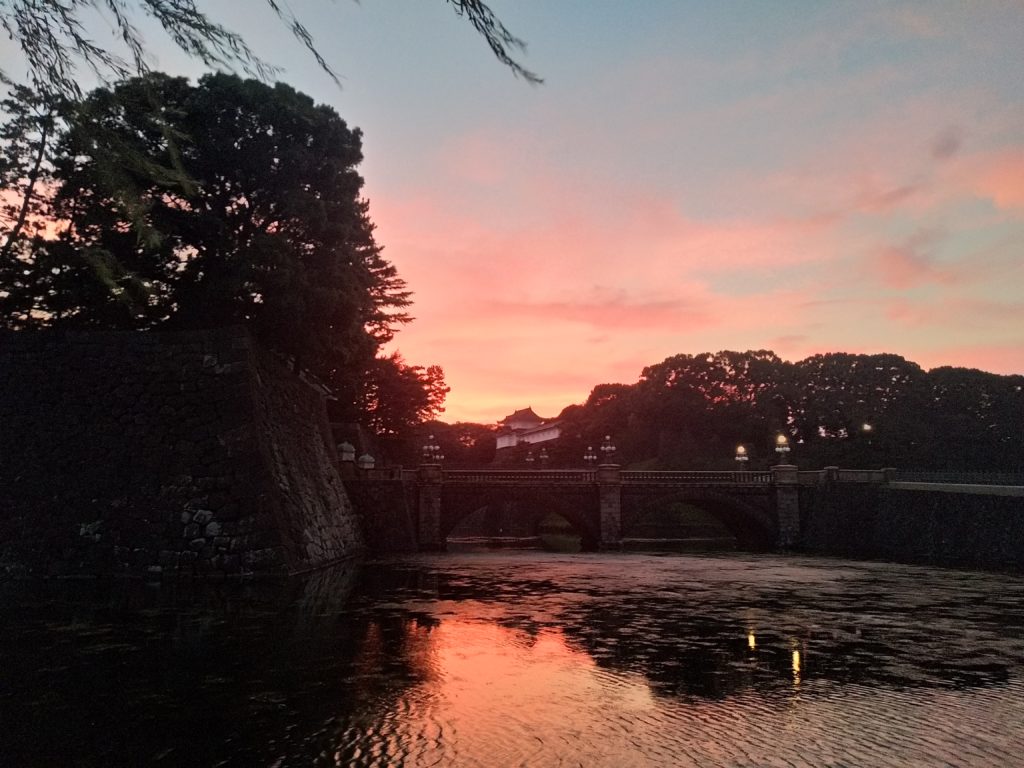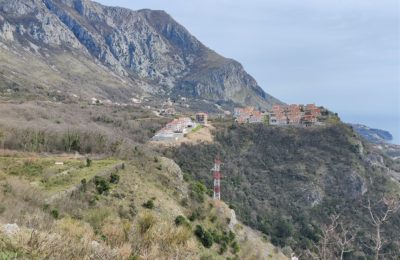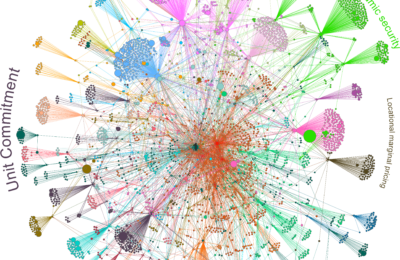My first visit to the “Land of the Rising Sun” was owing to the Renewable Energy Institute. Japan, being one of the key participants of energy cooperation in Northeast Asia, performs its independent studies on possible cross-border power interconnections with the neighboring countries. The Renewable Energy Institute (affiliated with SoftBank Group) is actively promoting cross-border power cooperation in the region. In the recent report, Japanese colleagues presented a detailed technical and economic analysis of the two prospective undersea cable interconnections: Russia – Japan and the Republic of Korea – Japan. Both projects turned out to be rational under certain investment and market conditions.

I had a chance to participate in the symposium on the proposed interconnection options and present the Skoltech’s study on energy cooperation in Northeast Asia. The main questions that I posed were: if cooperating, how the countries should split the benefits, and invest in the cross-border lines; what could be the mechanisms of such cooperation?

It was a pleasure to get positive feedback from the audience. It seems Japanese colleagues agree that the problem of energy cooperation mechanisms is even more acute in the region than technical and economic justification of the interconnection projects.
The symposium was definitely a unique experience for me. It turned out that I was the only Russian person at the event. Some of the journalists took this fact way too seriously: they called me “doctor Churkin” and asked questions about gas pipelines and political issues.
The official webpage of the event and the interconnections study report may be found here: https://www.renewable-ei.org/en/activities/events/20180723.html
Japanese cuisine after the symposium deserves a series of photos 🙂
A Japanese-style restaurant served traditional food that mainly consisted of raw fish. The only novelty – the leg space under the table. So, Europeans like me did not have to sit on the floor.
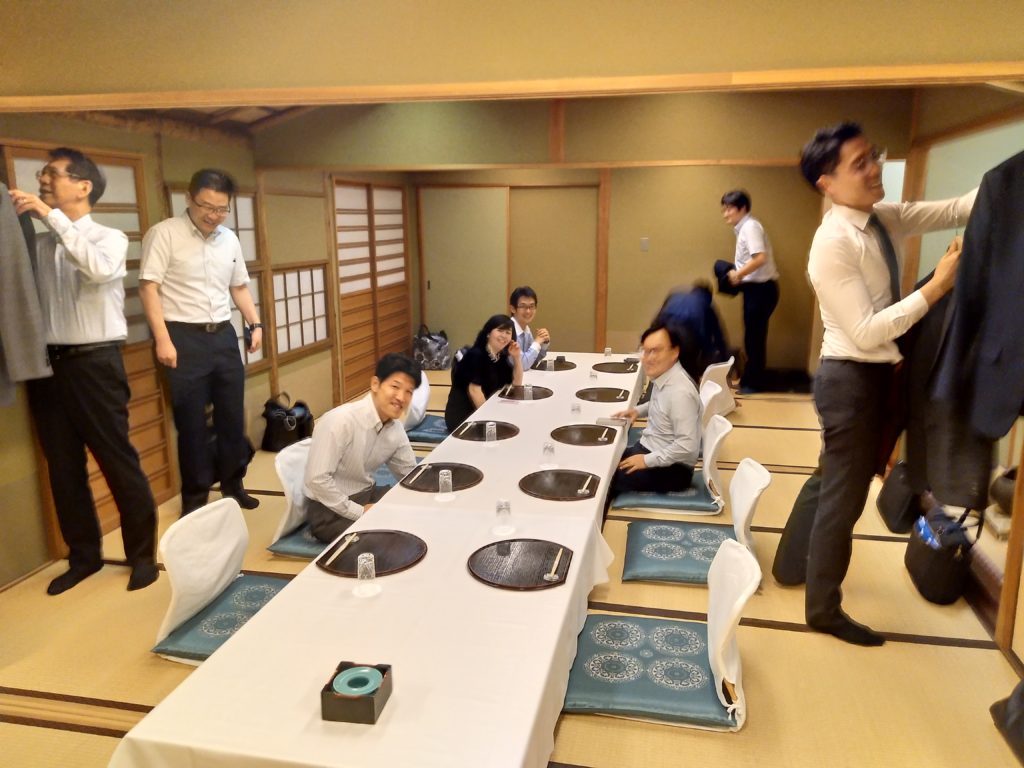
The next day I had an opportunity to walk in the city. Even though it is hard to call Tokyo “a city”. It feels like a complicated multi-level formation. The streets, the subway, the buildings. Everything makes you feel small, squeezed and lost. Looking from my hotel room, which was on the 34th floor, I saw a labyrinth of much smaller blocks below. It was hard to believe that each of those smaller buildings has 10-15 levels itself.
I felt a lack of parks and gardens in Tokyo. However, the existing ones are magnificent. I was passing by the Chiyoda City 千代田区 in the evening. The view seemed merely unreal. The architecture and the colors remind some fantasy but not a city park.
The Meiji shrine is also a unique place that preserves the atmosphere of ancient Japanese culture. The surrounding gardens create a feeling of an ancient forest that remains in the center of the megapolis.

A few days in Tokyo were not enough to feel and understand the country. Moreover, it seems to me that I did not see Japan at all. What I saw was a complicated futuristic city, a mix of cultures and technologies. I wish to visit other Japanese cities and Hokkaido one day.
P.S.
It is seen how much effort Japan puts in developing renewable energy. For instance, the entire railway from the airport to Tokyo is surrounded by solar panels. Dozens of kilometers of solar panels right in the city’s infrastructure!
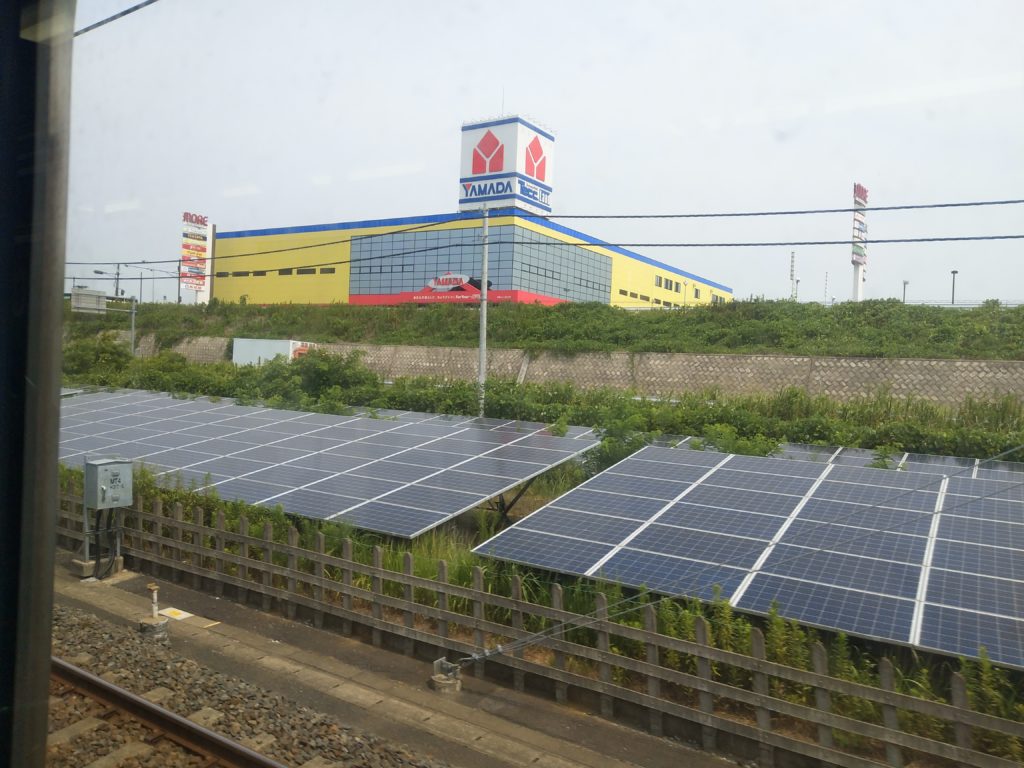
Andrey Churkin (Андрей Чуркин) 2018


